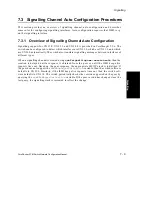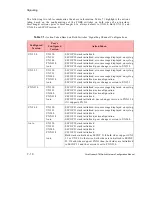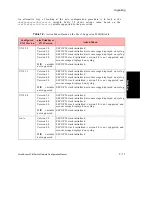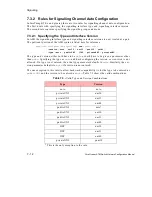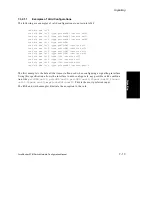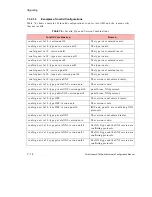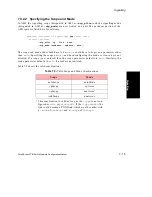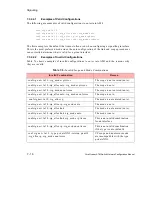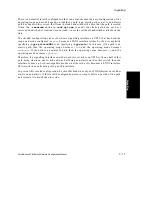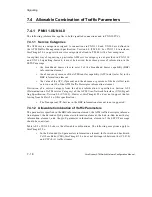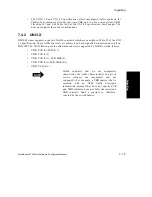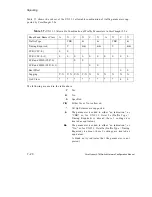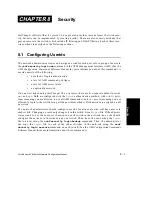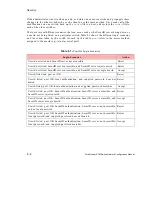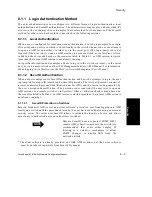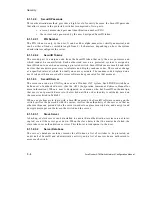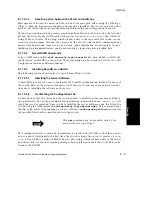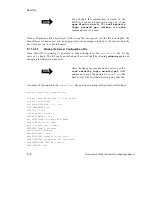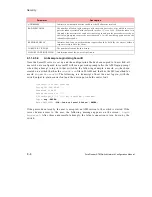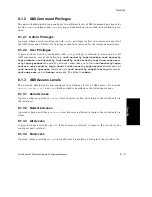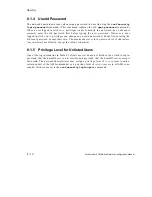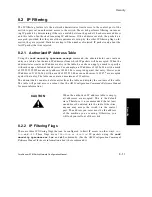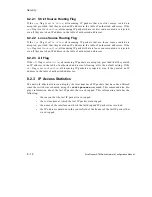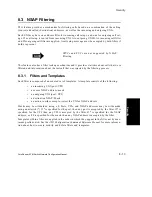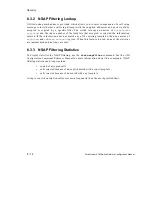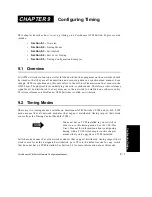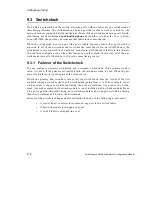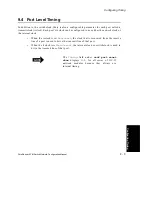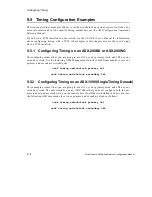
ForeRunner ATM Switch Network Configuration Manual
8 - 3
Security
Sec
u
rity
8.1.1 Login Authentication Method
The network administrator can configure two different forms of login authentication: local
authentication and SecurID authentication. The administrator may employ either method for
all users, or he or she may choose to employ the local method for some users and the SecurID
method for other users. Each method is described in the following sections.
8.1.1.1 Local Authentication
When a user is configured for local password authentication, he or she is prompted for a login
ID (userid) and a password which is stored locally in the switch whenever he or she attempts
to open an AMI session either via telnet or via the serial port. (The login password is not
required if the user tries to open an AMI session via a remote switch or via ForeView.) After a
validation check is made based on the scenarios listed in Table 8.1, an AMI session is started
(provided that a local AMI session is not already running).
For specific information and examples of how to log in to the switch via telnet, via the serial
port, or via a remote switch, see the ATM Management Interface (AMI) Manual. For information
about logging in via ForeView, see the ForeView Network Management User’s Manual.
8.1.1.2 SecurID Authentication
When a user is configured for SecurID authentication and he or she attempts to log in, the user
is prompted for a login ID (userid) and a SecurID passcode. The two-part passcode consists of:
a secret, memorized personal identification number (PIN) and the current code generated by
the user’s assigned SecurID token. (The passcode is not required if the user tries to open an
AMI session via a remote switch or via ForeView.) After a validation check is made based on
the scenarios listed in Table 8.1, an AMI session is started (provided that a local AMI session is
not already running).
8.1.1.2.1
SecurID Protection on Switches
Security Dynamics ACE/server and client software
1
prevents a user from logging into AMI
locally on a switch until the passcode entered by the user has been validated using an external
security server. The server uses SecurID tokens to validate the identity of users, and allows
access only to authorized users on valid clients (switches).
NOTE
Because SecurID does not protect SNMP, ILMI,
remote AMI, or ForeView access to the switch, it is
recommended that users either employ IP
filtering as a selective mechanism to allow
SNMP changes, or disable SETs from the
network entirely.
1.
The client software is already provided on FORE ATM switches, but the server software
must be purchased separately from Security Dynamics.
Summary of Contents for forerunner series
Page 6: ......
Page 16: ...TOC 10 ForeRunner ATM Switch Network Configuration Manual Table of Contents ...
Page 20: ...LOF 4 ForeRunner ATM Switch Network Configuration Manual List of Figures ...
Page 22: ...LOT 2 ForeRunner ATM Switch Network Configuration Manual List of Tables ...
Page 30: ...viii ForeRunner ATM Switch Network Configuration Manual Preface ...
Page 144: ...3 58 ForeRunner ATM Switch Network Configuration Manual Configuring an Emulated LAN ...
Page 180: ...6 12 ForeRunner ATM Switch Network Configuration Manual ATM Forum PNNI ...
Page 220: ...9 6 ForeRunner ATM Switch Network Configuration Manual Configuring Timing ...
Page 300: ...D 24 ForeRunner ATM Switch Network Configuration Manual Configuring FramePlus Modules ...
Page 308: ...Acronyms 8 ForeRunner ATM Switch Network Configuration Manual Acronyms ...
Page 346: ...Glossary 38 ForeRunner ATM Switch Network Configuration Manual Glossary ...
Page 352: ...Index 6 ForeRunner ATM Switch Network Configuration Manual Index ...

